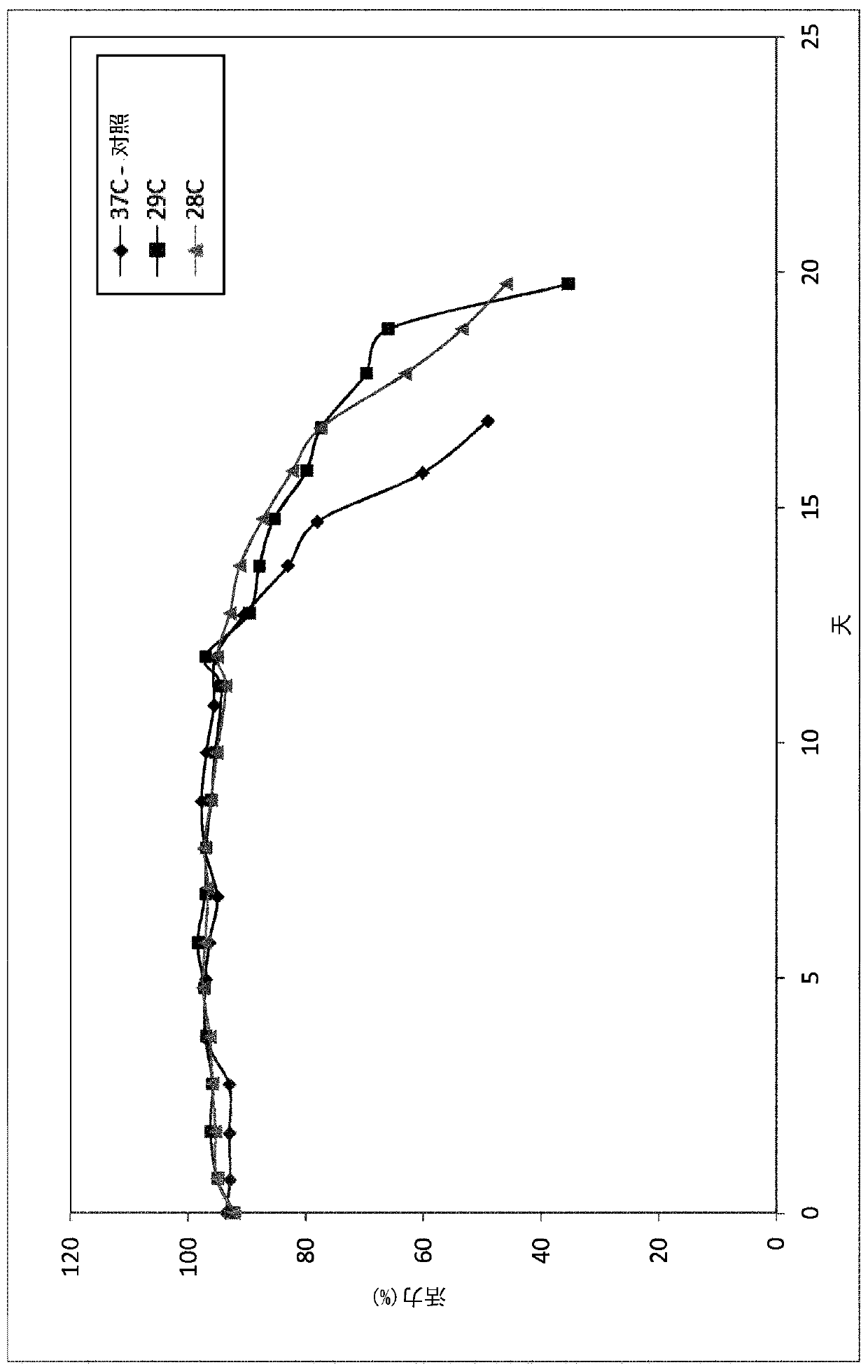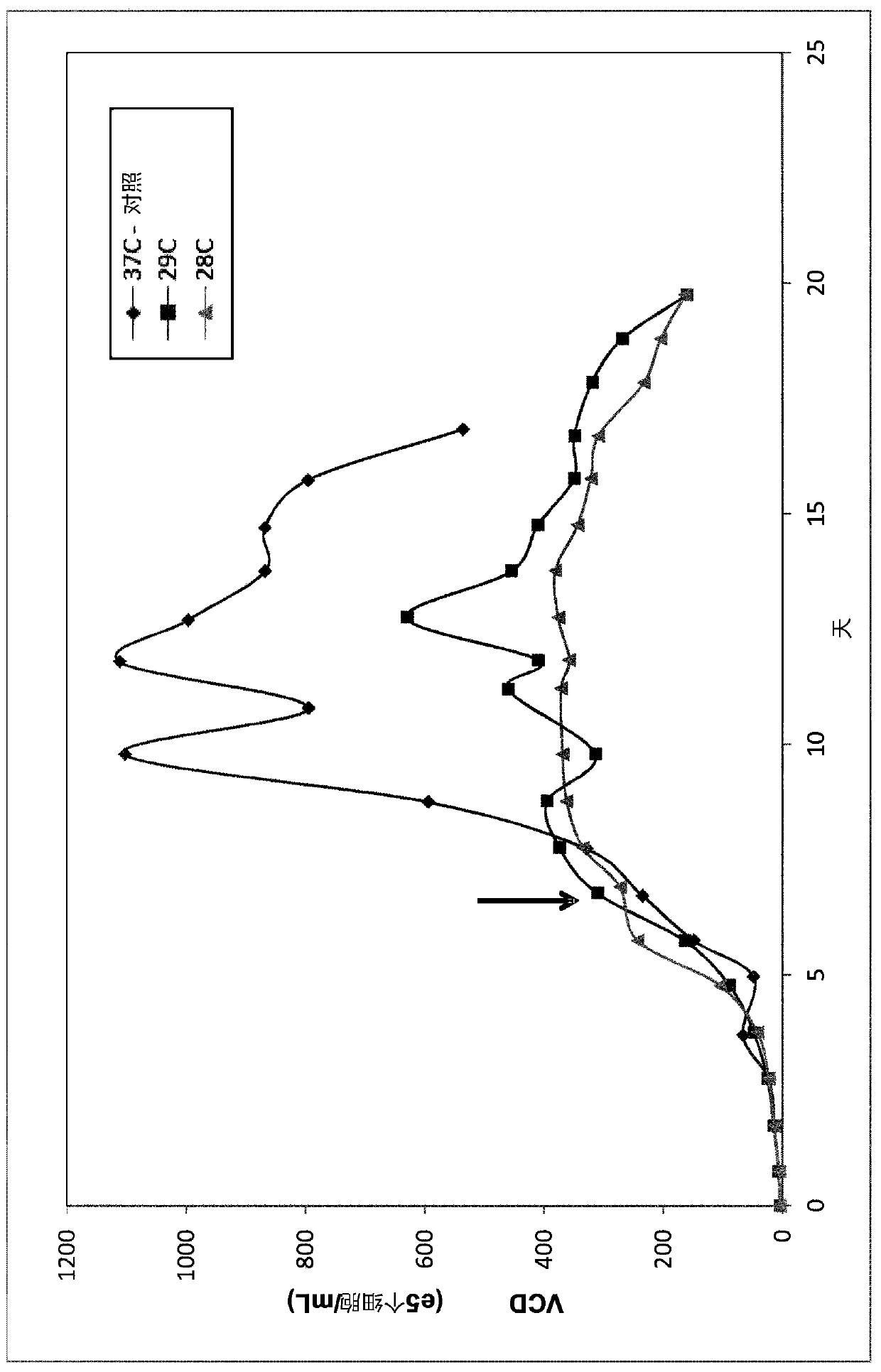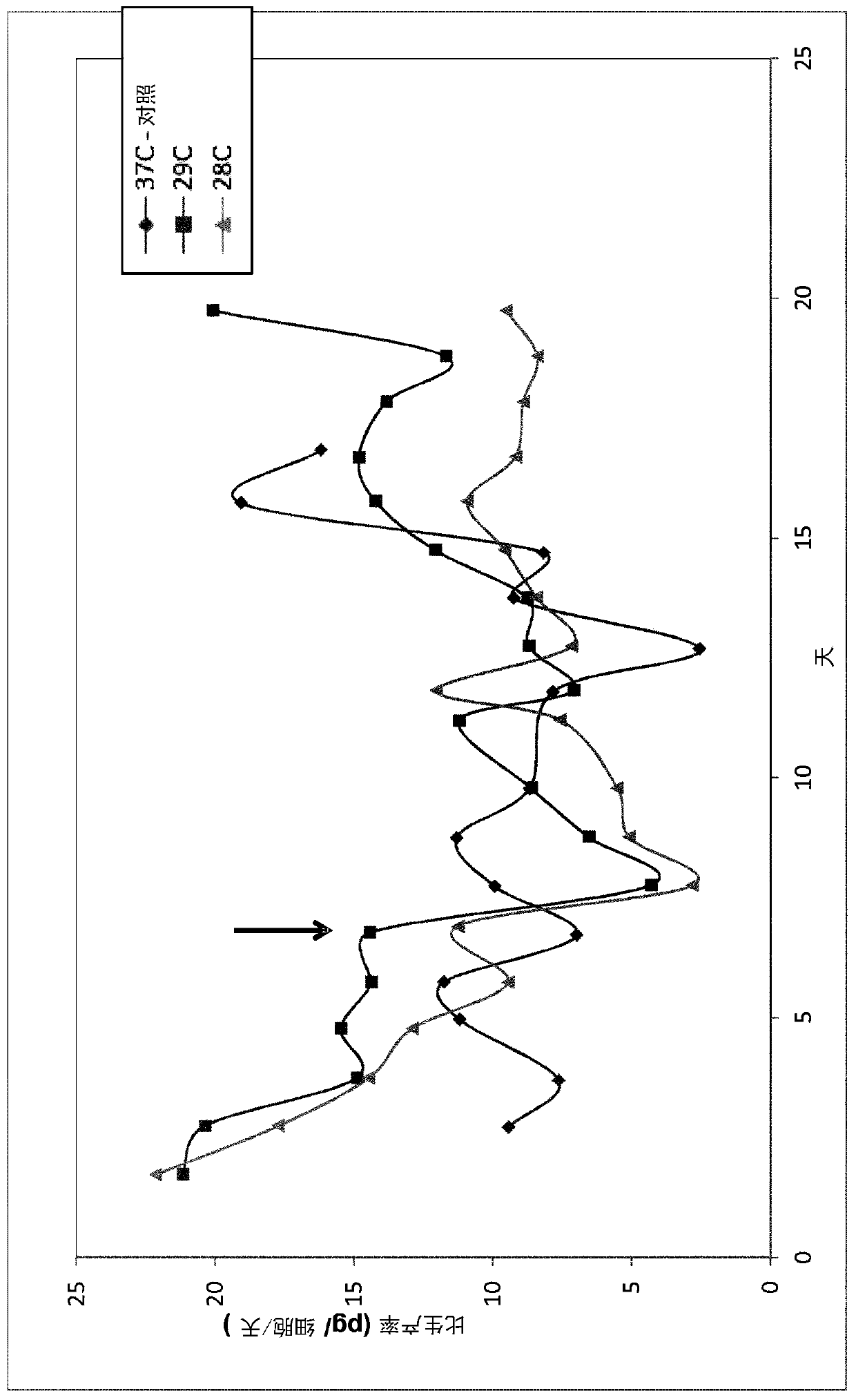Perfusion medium
A culture medium, cell culture technology, applied in the field of inhibiting cell growth in a perfused state, lipid-based additives, improved cell culture media, can solve problems such as no teaching or prompting, no teaching or prompting of cell growth
- Summary
- Abstract
- Description
- Claims
- Application Information
AI Technical Summary
Problems solved by technology
Method used
Image
Examples
Embodiment 1
[0220] Example 1. Effect of temperature shift on viability, viable cell density and specific productivity.
[0221] In this example, a bioreactor model was used. Lower temperature shifts are commonly used in cell culture to limit or inhibit cell growth.
[0222] Therefore, this example investigates the effect of temperature shift on (A) percent viability, (B) viable cell density (e 5 cells / mL) and (C) specific productivity (pg / cell / day). See Figure 1. Perfusion was initiated on day 2 of cell culture and gradually increased to 2 vessel volume / day (2VVD) changes. Arrows indicate days (day 7) when the temperature transitioned (to low) from 37 °C to the value indicated in the legend (29 °C – square or 28 °C – triangle).
[0223] In this example, this approach was found to slow growth, but was not found to affect cell specific productivity. In one cell line (data not shown), temperature shifts negatively affected product quality, increasing light chain and basic species. As s...
Embodiment 2
[0224] Example 2. Cell growth inhibition and cell productivity increase by exogenous linoleic acid.
[0225] In this example, a deep well plate model was used. This example demonstrates that linoleic acid inhibits cell growth and increases cell specific productivity (q p ). See Figure 3.
[0226] Linoleic acid was added to cell culture medium at various concentrations of 500 μM, 900 μM, 1350 μM and 1800 μM, and the effect on (A) viable cell density (e 5 cells / ml), (B) percentage of cell viability (%) and (C) specific productivity (q p ) role. Higher concentrations of linoleic acid showed a significant effect on inhibiting cell growth and increasing specific productivity. For example, at day 7, the specific productivity of cells demonstrated with linoleic acid at 500, 900 and 1350 μM was about the same and increased significantly relative to normal perfusion medium. Linoleic acid at 1800 μM was similar to arachidonic acid at 500 μM in terms of viable cell density, viabili...
Embodiment 3
[0228] Example 3. Cell growth inhibition and cell productivity increase by exogenous arachidonic acid.
[0229] In this example, a deep well plate model was used. This example analyzes the effect of arachidonic acid when added to the perfusion medium. See Figure 4.
[0230] The effect of arachidonic acid on (A) viable cell density (e 5 cells / ml), (B) percentage of cell viability (%) and (C) specific productivity (q p ) role.
[0231] It can be seen that arachidonic acid added at a concentration of 500 μM in normal perfusion medium inhibited cell growth by up to 31% and increased specific cell productivity by 46% or more. Thus, arachidonic acid inhibited cell growth and increased cell specific productivity (q p ).
PUM
 Login to View More
Login to View More Abstract
Description
Claims
Application Information
 Login to View More
Login to View More - R&D
- Intellectual Property
- Life Sciences
- Materials
- Tech Scout
- Unparalleled Data Quality
- Higher Quality Content
- 60% Fewer Hallucinations
Browse by: Latest US Patents, China's latest patents, Technical Efficacy Thesaurus, Application Domain, Technology Topic, Popular Technical Reports.
© 2025 PatSnap. All rights reserved.Legal|Privacy policy|Modern Slavery Act Transparency Statement|Sitemap|About US| Contact US: help@patsnap.com



